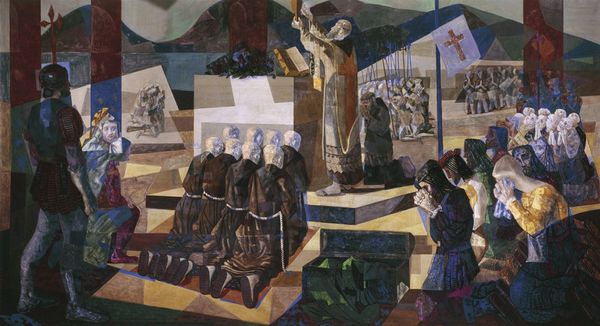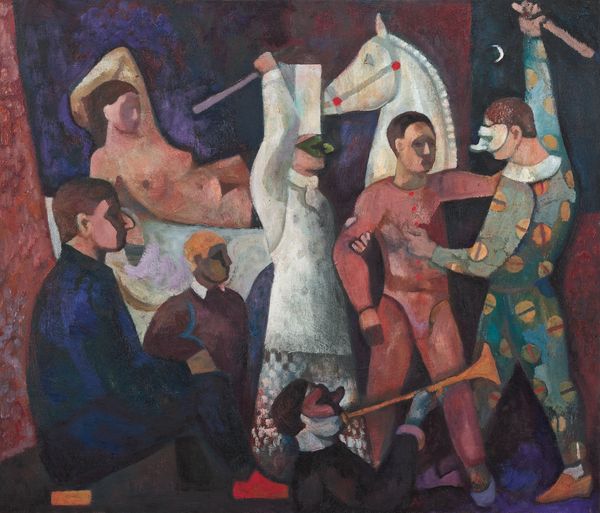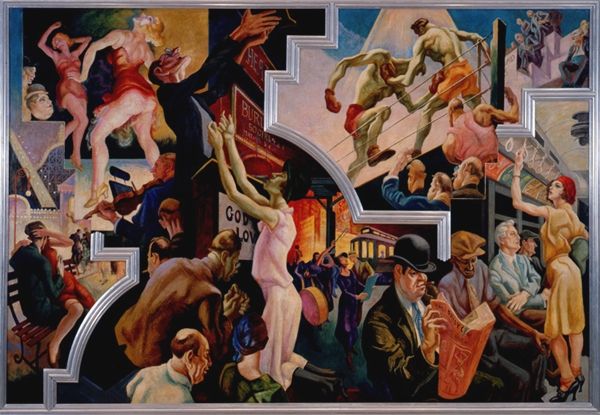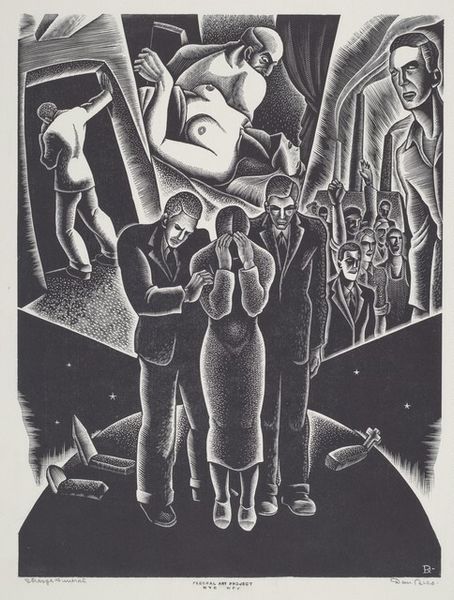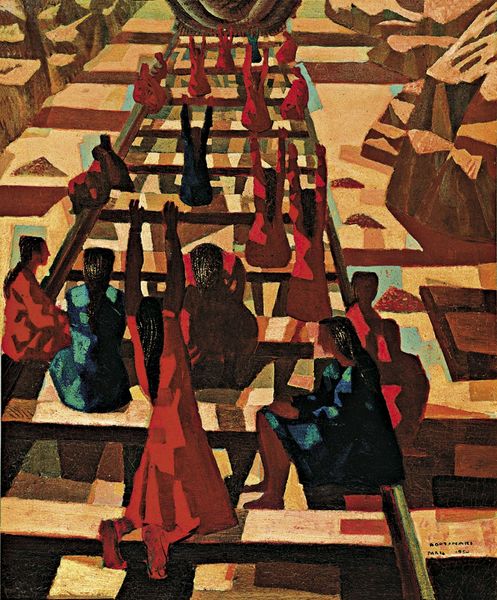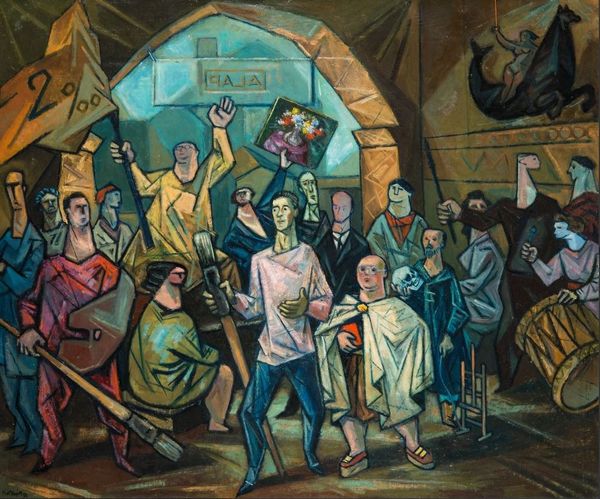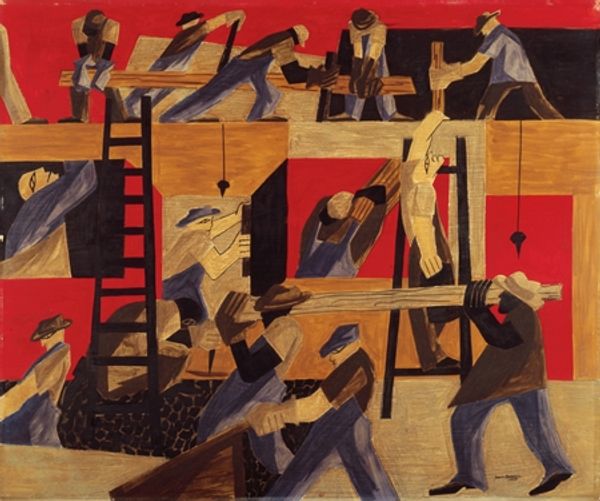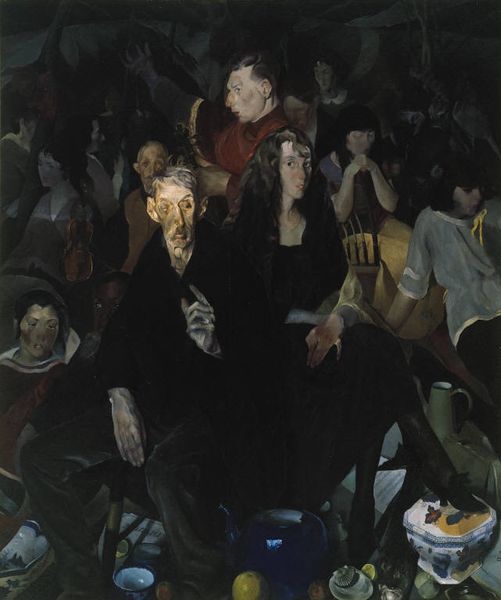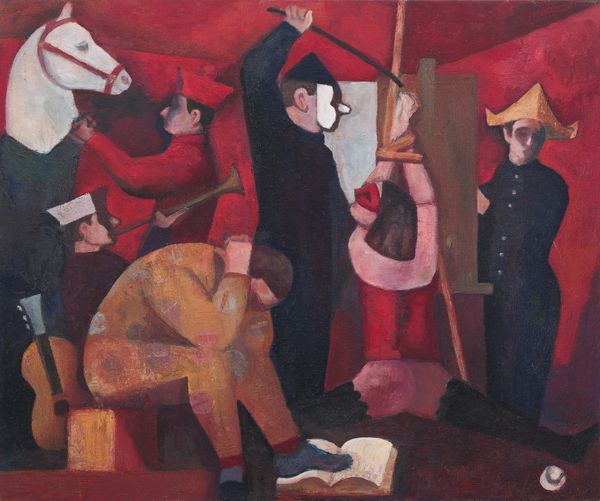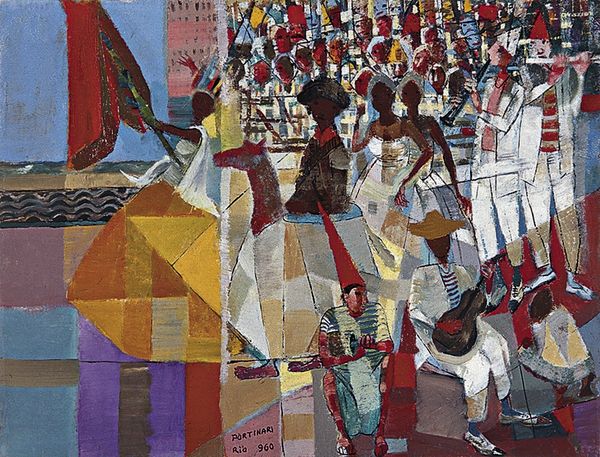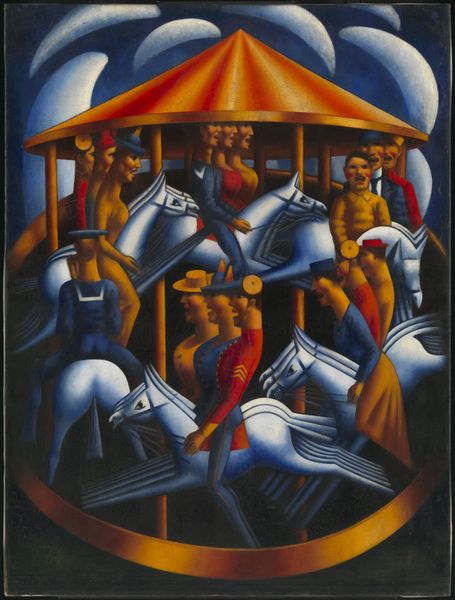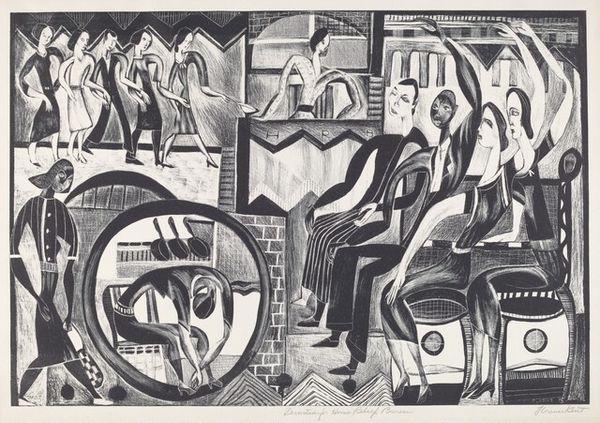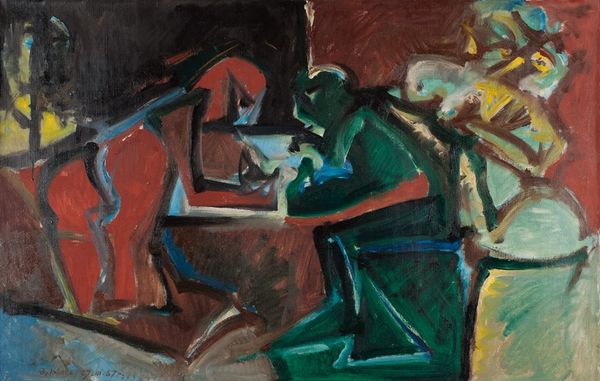
Dimensions: support: 914 x 762 mm frame: 1048 x 902 x 68 mm
Copyright: © The estate of William Roberts | CC-BY-NC-ND 4.0 DEED, Photo: Tate
Curator: William Roberts, a British artist born in 1895, created this intriguing piece titled "The Cinema." It currently resides at Tate Britain, and its scale is quite notable at approximately 91 x 76 centimeters. Editor: My first impression is one of contained chaos – the angular figures and compressed space give it a slightly claustrophobic, yet dynamic feel. Curator: Indeed. Roberts was deeply influenced by Cubism and Vorticism, movements that sought to capture the energy of the modern world through fragmented forms and geometric shapes. It reflects a broader social fascination with the spectacle of film. Editor: And the movie itself! The figures on screen—their gestures so exaggerated, echoing classical poses but with a frenetic, modern twist—it's like a collective, primordial drama unfolding. The whole space buzzes with anticipation. Curator: Consider also the social context. Cinema became hugely popular in the interwar period, offering both escapism and a shared cultural experience. Roberts captures that communal absorption, the way people gathered en masse to witness stories unfold. Editor: It's a powerful reminder of cinema's role as a modern myth-making machine. All those faces turned upwards, bathed in light…it's almost religious. Curator: A fascinating observation, framing the cinema experience as a kind of secular ritual. Editor: The symbols are really powerful. It's a great snapshot of the cultural psyche.
Comments
tatebritain 6 months ago
⋮
http://www.tate.org.uk/art/artworks/roberts-the-cinema-t00813
Join the conversation
Join millions of artists and users on Artera today and experience the ultimate creative platform.
tatebritain 6 months ago
⋮
Roberts’s early work was abstract and he joined Wyndham Lewis’s vorticist group. After the First World War, he made a name as the painter of everyday modern scenes. While film had been invented in the late 19th century, it reached new heights of sophistication and popularity in the 1920s, the age of Charlie Chaplin, Buster Keaton and the rise of Hollywood. Movies were silent until 1927 and were accompanied by live music. Many music halls, traditional places of popular entertainment, were adapted to show films. Gallery label, September 2016
